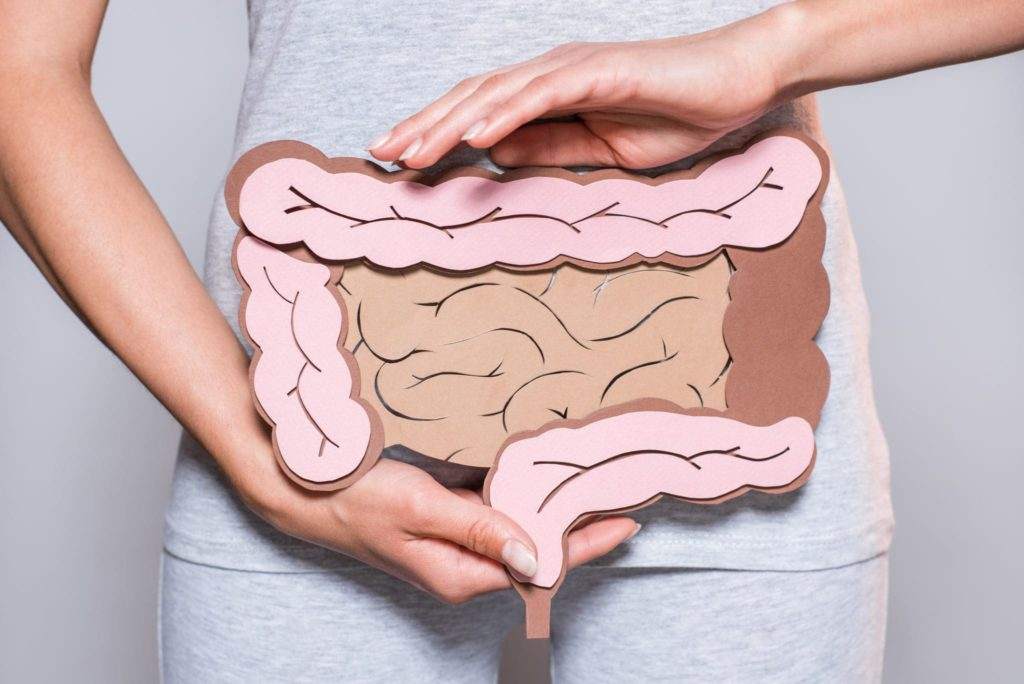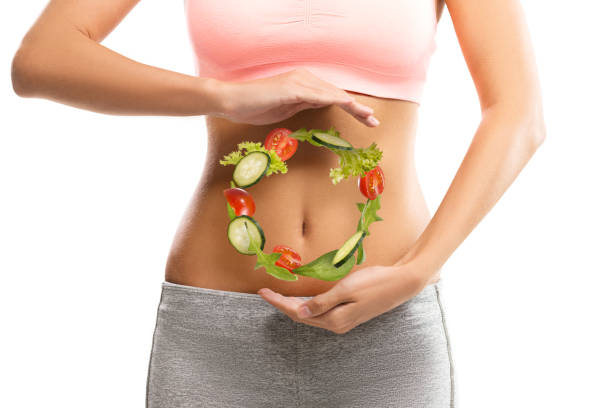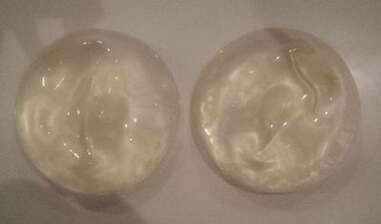|
How Your Gut Health Can Affect Your Mood!!
When it comes to our overall well-being, we often focus on physical health and mental well-being as separate entities. However, recent scientific research has shed light on the complex relationship between our gut health and our mood. It turns out that the trillions of microbes residing in our gut, collectively known as the gut microbiota, play a crucial role in influencing our mental state and emotions. The gut microbiota is a diverse community of bacteria, viruses, fungi, and other microorganisms that reside in our gastrointestinal tract. While we've long recognized their role in digestion and nutrient absorption, emerging studies suggest that they have a profound impact on our brain and behavior through what is known as the gut-brain axis. Here are some key ways in which your gut health can affect your mood:
Namaste!!!
0 Comments
 Happy New Year!!! I hope you had a wonderful New Years celebration with lots of smiles and excitement for what 2023 may bring! I know for me, 2022 was a pretty challenging year. Sadly I had lots of loss along with lots of lessons, and not fun ones! Although I try and see each difficult time as a time for growth. So with that, I'm looking forward to this new year, and taking all that I have learned, bringing it forward and applying it to my impending achievements this year. That being said, this time of year, winter, brings on its own set of immune challenges. Covid is still a thing, RSV is plaguing some of our kiddos and just the good ol' fashioned colds and flus are rearing their ugly head. Even though the lack of sun may cause us to feel not as energized or healthy, there are some things you can do to boost your immune system as well as your mood. I've put together a few ideas which will help get you moving as well as feel better about pushing through the long cold winters. 7 STEPS FOR BOOSTING YOUR IMMUNITY NATURALLY!! THE BEST OFFENSE IS A GOOD DEFENSE WHEN IT COMES TO ACHIEVING A STRONG IMMUNE SYSTEM. Getting sick during the winter months can feel inevitable, almost like a simple fact of life, we start to feel as those we must learn to accept that this dip in immunity comes with this transitional season. But the truth is, there are a few key steps we can take to help us to stay healthy and immune to the office cold or school flu. By thinking ahead and prepping accordingly, you and your entire family can get a leg up on your immune system and outsmart the pitfalls of getting sick. Here are seven natural ways to boost your immunity: LISTEN TO YOUR BODY The first and most important tip is to pay attention to when your body begins to feel run down. Don’t ignore your internal cues, which can range from feeling tired and being more easily irritable to having difficulty regulating your temperature, experiencing itchiness in your throat or behind your ears, becoming easily winded or experiencing a change in appetite or cravings. Get that bit of extra rest or TLC! Our immune system is directly connected to our 24-hour circadian rhythm. Our sleep-wake cycle is part of this system and is regulated mostly by the presence of dark and light. While our body is resting, the immune system cells can focus all efforts and energy on a strong attack against viruses and bacteria. If we ignore our circadian clock, eventually, our health becomes compromised because the body couldn’t regenerate and heal. So make sure to clock in the recommended 7-8 hours of sleep each night. COOK WITH BONE BROTH Love Love bone broth!! Bone broth provides a wealth of nutrients that are easy to digest and are known to rebuild and rejuvenate the system while facilitating healing in even the most complicated of cases. It contains both anti-inflammatory and gut-healing proteins, offers healthy fats for rebuilding strength, and includes highly bioavailable minerals that are the building blocks for immunity. START YOUR DAY WITH A FRESH MUG OF WARM LEMON WATER. Starting each morning sipping on this powerful immune system combination can not only help alkalize our bodies and cleanse it of toxins, but it offers an extra hit of vitamin C that’s essential for staying bright and healthy. TAKE THE “ALMIGHTY” GINGER SHOT. Whether you’ve come down with the latest bug or want to add a boost to your daily detox, immunity shots provide a concentrated dose of anti-inflammatory, immunity-boosting ingredients that fight the effects of everything from hangovers to the start of a cold. Take a ginger shot at the first sign of an immunity slump. FIND SOME TIME TO BE IN THE SUN Vitamin D is a primary source of fuel for our white blood cells, which are our body’s first line of defense against pathogens and microbes, whether they are fighting bacteria, virus or fungus. Therefore to prevent illness, we should definitely stock up on Vitamin D supplements in preparation for the cooler months. Our bodies have the innate capacity to synthesize vitamin D from our skin’s direct exposure to sunlight, but not nearly enough for optimal health. D is especially critical during the winter months and for those living at higher latitudes (more northern cities) that do not get as much sunlight hours, especially as we start spending more time indoors. It is recommended to test your vitamin D levels prior to supplementing.. ADD VITAMIN C TO YOUR DIET Vitamin C might seem like a played out immunity tip, but it’s power simply can not be underestimated! Vitamin C is essential for strong immunity. As a critical antioxidant utilized for preventing damage to our organs and glands and skin, we benefit from Vitamin C not only by taking it as a supplement but even more so by incorporating it into our diet on a daily basis. Vitamin C is found in the obvious places such as citrus fruits (grapefruit, oranges, lemons, limes), but another and even a more well-rounded source, is in the form of dark leafy vegetables. Turnip greens and Swiss chard are at the top of the list of veggies that pack the most punch of Vitamin C. When supplementing, taking Vitamin C in the “liposomal” form is the most bioavailable (readily absorbable) for your body’s uptake and assimilation into your cells! Liposomal products essentially have a protective barrier around the desired nutrient, that does not allow it to be affected or broken down by the hydrochloric acid in our stomachs. This allows the desired nutrient/supplement/vitamin to arrive unfazed and intact to the targeted tissues. GARLIC IS YOUR FRIEND. We know munching on garlic doesn’t sound like the most pleasant immune tip; however, its potent antimicrobial, antibiotic and antiviral powers make it a must-have during the autumn months. This remedy is as old-fashioned and powerful as it gets: although it seems extreme, eating a raw knob of garlic can knock out even the most stubborn colds. For colds and cases of flu, it also provides decongestant and expectorant effects, allowing for the breakdown and expulsion of stubborn mucus. Garlic, in addition to Vitamin C and a slew of enzymes and minerals such as sulfur and selenium help boost immunity and kill cold bugs before they get cozy and start to wreak havoc on your health. So, good luck this winter, remember to take some time for yourself and make sure you're staying healthy! Namaste!  My favorite subject, Gut Health and Leaky gut!!! How do we as Doctors treat it Naturopathically? Read below Naturopathic Approach to Gut Health because NDs practice medicine by identifying the root cause of any condition, testing is usually required to determine underlying pathology responsible for issues in a patient’s health. If someone is suffering from digestive complaints, blood testing for food sensitivities and allergies, bacterial or yeast overgrowth via a stool test or even a breath test can be utilized to determine if there are organisms living in the small intestine (where there should not be) or other imbalances implicated in symptom expression. Treatment is then individualized based on the results of the testing. The following are digestive issues that are commonly treated by naturopathic doctors. DysbiosisAs described above, the microbiome is a collection of bacteria that resides in the large intestine of the digestive tract. Unbalanced gut flora is one of the primary drivers of many digestive disorders. The problem can be either an overgrowth of unhealthy bacteria, or an undergrowth of beneficial bugs. Frequently, an overgrowth of yeast is to blame, and the most common symptoms produced are gas, bloating, and diarrhea. Dysbiosis can be diagnosed via a stool test (large intestine imbalance) or a breath test for the small intestine. The naturopathic approach for treatment is a “weed and feed” process. Either herbal or prescription antimicrobials (sometimes alternating with both) are given to kill the bad bacteria (the weeding), and then a probiotic is prescribed to re-populate the gut with good bacteria (the feeding). In this way, the good bacteria are able to crowd out the harmful microbes and proper digestive functioning can be re-established. Prebiotics may also be prescribed. These are substrates that the beneficial bacteria use to grow. An example of dysbiosis (microbiome imbalance) which has become better understood in recent years is small intestinal bacterial overgrowth (SIBO). SIBO occurs when bacteria inappropriately colonize the small intestine. Because of defective motility of the gut, the bacteria migrate upward rather than staying in the colon where they belong. As with other forms of dysbiosis, the symptoms are abdominal pain, gas, bloating, constipation, and/or diarrhea. The treatment is also comprised of a weed and feed approach (remove offending bacteria and then replace with beneficial ones), with the addition of motility agents that prevent the bacteria from moving upward. Dietary Considerations for DysbiosisDietary considerations must be taken into account when balancing the microbiome to prevent and treat dysbiosis. Highly processed foods are associated with a less healthy microbiome, particularly a diet high in refined carbohydrates and low-quality fats. These foods have been shown to reduce the biodiversity of the microbiome, resulting in a host of health issues that may be related to the above conditions. A diet high in legumes, fruits, and vegetables are associated with a more diverse microbiome which keeps inflammation at bay and ensures a more properly functioning immune system. 16 Leaky GutIntestinal permeability, or leaky gut as it is commonly known, is a condition that affects the lining of the small intestine. When the intestinal wall comes into contact with inflammatory foods, toxins from food and water, or even metabolites from the above-mentioned bacteria and fungi, this can result in damage to the cells that line the gut. Connections between the cells are referred to as “tight junctions,” because its job is to create a sufficient barrier between the gut and the bloodstream. 17 This is necessary to prevent larger proteins from food and toxins from escaping out of the GI tract and entering the system. If these tight junctions are affected, and become “leaky” and proteins do escape, the immune system identifies them as outside invaders and will launch an immune response, resulting in food sensitivities, allergies, and autoimmunity. 18 Leaky gut is typically addressed by identifying and eliminating food sensitivities, healing the gut lining with supplements such as L-glutamine, and adding anti-inflammatory herbs and a whole foods diet low in processed fats and carbohydrates. Inflammatory Bowel DiseaseInflammatory bowel disease (IBD), as its name suggests, is chronic inflammation of the gut. Generally speaking, the two most common forms of IBD are Crohn’s and ulcerative colitis UC) and are characterized by symptoms such as abdominal pain, diarrhea, rectal bleeding, and weight loss. 19 While the cause of IBD is not entirely known, research suggests that a genetic component may be present, combined with environmental factors, such as stress and lack of exercise, and of course, the state of the microbiome. 20 Research shows that a diet high in low quality fats, frequent meals of fast foods, high refined carbohydrate intake, and low fiber diets result in a dysbiosis that may exacerbate symptoms of IBS. Dietary recommendations include a low fat, high fiber, diet that excludes potential triggers such as dairy and refined grains. Foods high in vitamins A, D, E, folate, and beta carotene, as well as minerals zinc, selenium, manganese, and iron appear to be particularly helpful. 21 Gastroesophageal Reflux Disease (GERD)Heartburn, and acid reflux are other names for GERD, which is an extremely common condition affecting approximately 20% of people in the United States. 22 GERD occurs when stomach acid moves upward from the stomach into the esophagus and results in symptoms of chest pain/burning, sour taste in the mouth, sore throat, chronic cough, and difficulty swallowing, and is usually worse at night when lying down. 23 GERD is caused by a laxity of the lower esophageal sphincter (LES), which allows the gastric juices to “reflux” up into the esophagus rather than remaining in the stomach where they belong. GERD is typically diagnosed by symptoms; however, an endoscopy may be ordered to assess for damage to the esophagus or to rule out more serious conditions. 24 Naturopathic treatments include finding and eliminating food sensitivities, body work to tonify the LES, and supplements/ herbs that are soothing and healing to the upper digestive tract. Supplements for Gut HealthBecause digestive complaints are so incredibly prevalent in our society, naturopathic doctors have lots of treatment options to help re-establish gut health! Here are a few of our favorites:
 I LOVE Fall in Colorado! The Aspens are turning, the air is slightly cooler with the crisp coming in at night, and things just feel as though they are slowing down a bit, just before the big Xmas rush! My husband and I try to make sure we get in our bike rides on the trails even though it is getting a bit chillier, that just means layers and making sure my ears stay covered. I had a lot of ear troubles as a kid, so the scar tissue makes for a fairly sensitive ear canal, especially to cold and wind. I have four kids but they are getting older, so this year my husband and I have decided they don't need piles of toys and gifts they probably won't use. One nice gift and a few little token things. And, with the economy they way it's been, we're trying to cut back where we can. Every year we've been trying to get up to Vail in October just as the leaves are changing, and hang out in the village. We take or youngest, he seems to love it, he's all about nostalgia. We grab some coffees and hot chocolate, walk the trails and hit up some shops for Xmas gifts. Super fun and super close which is even better! With the busier time closing in on us, I try and remind my family to take time for yourself, we often forget about that as our other responsibilities seem to take precedence over self care. Even doing small things every week, can make a world of difference. Grabbing a coffee at cute nearby coffee house, having a lovely square of dark chocolate after dinner now and then, or a short walk with your dog. Self care means taking the time, even if its only thirty min, to do something nice for yourself. Its so so important. Take today to make a list of things you love to do and check off one at a time every week. Your week will feel more enriched and you will find your mood shift, even just a little, and looking forward to that small amount of time you have dedicated to yourself. Take care of you and Namaste!  Intermittent Fasting Strategy for women over 40 What if I told you that breakfast isn’t the most important meal of the day? That all those years of people telling you not to skip breakfast, they were lying to you? Lying may be harsh, how about misinformed? It’s actually more important when you eat, as opposed to what you eat. Intermittent fasting is possibly one of the most profound nutritional concepts as it pertains to aging, health, wellness and healing your body. Many illnesses like obesity, cardiovascular disease and diabetes have seen tremendous positive results from intermittent fasting. The topic of fasting is centuries old, and yet there is one area that has been overlooked all these years; how it effects women, especially women over 40. The old adage, eat less and exercise more no longer applies, but has been the platform for women for decades, causing many women undue stress and belief that they could never get as healthy as they would like as that goal seems sometimes unreachable. We are still overweight, hormonally imbalanced, and cardiovascular disease is still the number one killer of women over the age of 40. Women DO NOT have to accept weight gain as a ‘normal part of getting older’. In fact, the myth that the muffin top is all part of the peri-menopausal ‘experience’ is not only a farce, but not an experience any of us should have to put up with! When health care providers tell their patients, namely women, to eat three healthy meals per day with small snacks in between, it’s wrong. It creates the perfect storm for the body’s inability to properly digest food, and causes the pancreas to go into overdrive. Fortunately, women can and do benefit from fasting. We all know those people who struggle to lose weight, are often hangry and have cravings for carbs and sugar. We also know those people who burn fat quickly, are cognitively sharp, rarely have cravings and never snack in between meals. One is the sugar burner; the other is the fat burner. 2/3 of women between the ages of 40-60 are overweight and more than half are obese. A lot of people would rather have a quick fix like a diet pill or a diet powder that promises to ‘help you lose weight’, than shift their ‘when’ they eat. In fact, the weight loss and diet industry is a 58 billion dollar industry* and many companies have made a fortune off people desperate to loose the weight, primarily targeting the over 30 age range. This year alone will see an uptick to 326 billion dollars as a lot of people have been home and mental illness like depression and anxiety is on the rise. Women, above men, across the board are more affected by weight gain with aging primarily because of hormonal imbalances. Unfortunately, as we age, we have less lean muscle mass and gain an average of 1-2 lbs. per year after the age of 50! So, instead of wasting your money on diet trends and diet powders, the best and most effective long-term solution is intermittent fasting. The simple art of teaching your body when to eat can be transformative. And best of all, it’s free!! Intermittent Fasting: The absence of food during a specific time period. Extending the time between your last meal and your first meal of the day gives your body time to heal in between and start burning fat stores. When you eat, your pancreas releases insulin which then stores sugar in the cells that move towards the liver. We store the bulk of our sugars in our liver and musculoskeletal system. But when these stores get overloaded, they become fat. When we fast, insulin levels are lower and our body taps into our fat stores for energy. Skipping breakfast, 16 hours of fasting, with an 8-hour window for meals, reduces our caloric intake by 20-40%! This method, however, is not for everyone. Those that should not adhere to this are: -Difficult to control diabetes -children or teenagers - anyone over the age of 70 -anyone with chronic heart issues -Pregnant or nursing moms -anyone with kidney or liver disease -anorexia or bulimia -or anyone recently in the hospital How do you start? Generally, start with a 12–14-hour window for the first couple weeks. Keep yourself well hydrated during this time. Increase by an hour every few days. Try for 30 days and see if this is the right strategy for you. So, for example, if you’re finished with dinner around 6 or 7pm, 12 hours would be 6am the next morning. Try and stretch your intake until maybe 8. That would be an excellent first swipe! Understand this method may take 6-8 weeks to see any real long-term results. And also understand, your initiating long-term results! So, what CAN you eat while fasting? Well, nothing. However, water, tea and coffee are permitted. When you’re starting out, it may be difficult, so adding grass-fed butter, coconut oil, or MCT oil to your tea or coffee may stave off the initial hunger pangs. This way it won’t feel so much like starving, as some may find the 16-hour window challenging in the beginning. Fasting basically tells your body to stay calm and designates resources for autophagy (cell cleanup) and rapid fat burning (ketosis), but that it’s not a famine either. You aren’t taking in any starches or sugars, and there’s no famine stress signal, so this is unlikely to bring on adrenal fatigue. So, what should you eat when you break your fast? At that point, your body deserves healthy, clean foods. Whole grains, lean proteins from grass fed sources, healthy fats like avocado, grass-fed butter and coconut oil. And, if you are peri-menopausal, unprocessed carbs like berries, sweet potatoes, and squash. Limit your sugar and alcohol as this will undo everything you’re trying to achieve! Bottom line, when you plan your diet and take control, not only will you feel more empowered, but you realize the potential to gain control over your life through simple easy changes to your daily life. By integrating intermittent fasting into your lifestyle, you create a foundation for lifelong healthier habits that improve aging and overall wellness. If you need ideas for clean, hormone balancing recipes suitable for women over 40, here is link to download FREE recipes from Bountiful Bird. Namaste!  Hello and heya! I would say this Blog is LOOONG overdue! Last year was especially crazy, but now there's a gap where I can start working on my website again. It needs an overhaul BIG TIME!! This summer I've been mountain biking and trying to take it to a new level. Living in Colorado means that basically everyone here is an athlete. So, when I am working towards something, like climbing a peak I couldn't the previous year, or going a distance that was challenging the year before, I get there are 12 year olds who have lived here their entire life that could fly passed me, but it still feels good knowing that I've improved and reached a goal that was tough for me! So, I am changing things up a bit with regard to my business. I will be providing more remote consultations and offer zoom meetings. I've been helping a lot of clients with vaccine injuries as well as long hauler symptoms and finding that it's a process that could take time to see improvements. However, it does happen and fortunately recovering through those challenges can be accomplished. Also, if you are having issues with your immune system, we can work on that as well. Thanks for checking in and please reach out if you are experiencing residual Covid issues. We will get through this together. Namaste  Welcome to 2021, where we think things will be turning for the best, when in reality, we have no idea but we just keep moving forward. What else are we going to do? So how are you getting through these tough times? I think most of us have decided to write off all the BS and learn something new that will in some small way enhance our lives, or, just get us to stop focusing on all the negativity. Have you taken up a new hobby? Started a book, a blog, spent more time with your significant other or children, spent more time outside? In either case, I think what this past year has taught me was that I needed to really start changing things up a bit. I've been a mountain biker for many years, but this last summer I really started getting into it. To the point in fact, that I spent more time on my bike than driving, which was probably better! I completely fell in love with it again and when I wasn't biking, I was thinking about biking. My husband and I spent time seeking out new places to try and even our youngest got into it, which was awesome. Living in Colorado, you are never without a place to hike or bike, that's why living here is such a treat! Biking together gave us a new sense of adventure in our marriage because its not always rainbows and sunshine when you get out there. There were times when conditions weren't always the best, and we had to rely on each other and our wits. When the weather turned cold and the trails became too sloppy, there were days when we went anyway, and boy did we regret that! Mud and ice mixed with freezing temps and clogged brakes. Fun stuff. But actually, those were some of the most fun in the sense that it really tested my will. Pushed me beyond my comfort zone and when I finally made it to the end of the trail, I was not only bruised and scraped up, but empowered. Mountain biking became my outlet, and I think to some degree my reference point for just how far I could push myself. Those trails of doom that fell to the side of the mountain, the ones I rode on knowing that one small unintentional jerk could send me rolling down that cliff, end over end, feet and bike spokes enmeshed. The agonizing grind up 2000 feet with no end in sight, wondering if my legs and lungs would give out before I got to the top. And finally, the satisfaction of knowing that I finally made it to the top of a peak that, at one point, I would stare up at and admire, wondering if I would ever defeat it. But, I took it one ride at a time, going further and further, pushing myself just a little bit more. Some days crying through the pain, wanting to give up and drop my bike right there. I stayed on, looked toward the goal, and finally made it to the top. So, as I go into 2021, I think of it like that mountain I climbed, the peak I never thought I could conquer. One day at a time, pushing myself even when I don't want to be pushed. Even on those days when I want to stay complacent, moving forward is what gets us to the top of the peak. Take care and Namaste So, I go my drains out today and omg, what a relief! I had such a hard time getting comfortable at night, so I lost a lot of sleep just after surgery, which isn't exactly great for healing. Hopefully starting tonight I will get some much needed rest.
|
Archives
June 2023
Categories |
Proudly powered by Weebly






 RSS Feed
RSS Feed